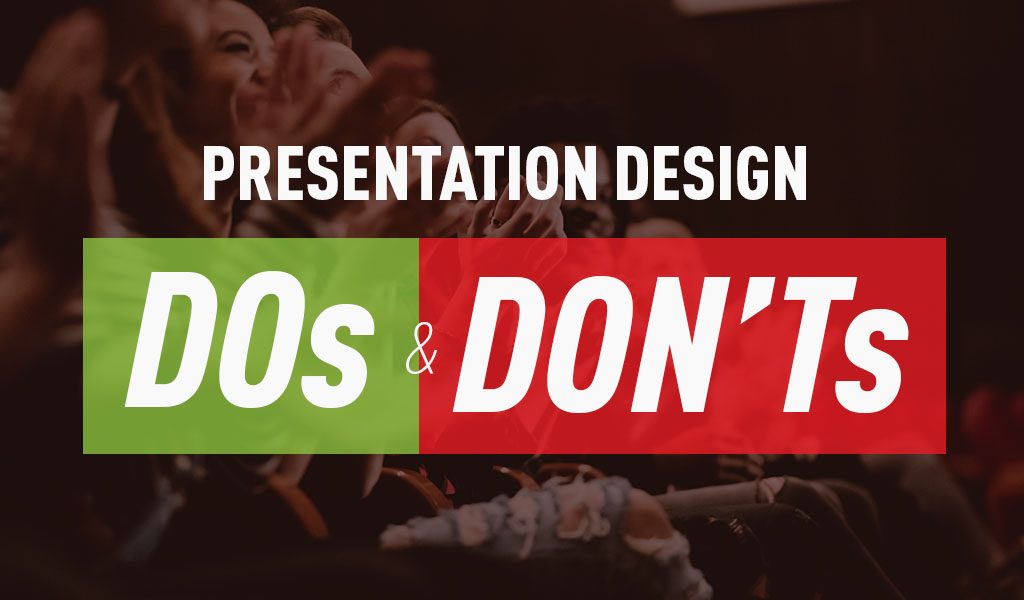There are endless presentations out there, but very few are compelling and engaging enough to motivate audiences to action. That’s because creating a truly excellent presentation requires a level of design skill and knowledge that many people don’t yet have.
But you certainly don’t need to go to design school to create a high-quality presentation—you just need to have a strong idea of what works and what doesn’t. (Hint: Bullet points never work.)

Don’t use a lot of a text in your slides.
If you pack your slides with lengthy text, then your audience is going to be straining to read what’s written rather than listening to what you have to say. Plus, large text blocks are the opposite of visually compelling.
Do use as few words as possible on each slide.
Remember, the purpose of your slides is to create compelling visuals that complement your message; they’re not supposed to deliver the message the for you.
Don’t use the same font size throughout your slides.
A uniform font throughout your presentation is not only a drag to read, but it fails to put emphasis on the most important parts of your message.
Do switch up font sizes throughout each slide.
Making the most important words bigger and bolder allows your audience to take in the most valuable information first before moving on to the supporting content.
Don’t use bullet points.
According to a 2014 study, audiences that viewed a bullet-point presentation had a significantly more difficult time paying attention and recalling information than those that viewed graphic-infused presentations.
Do use graphics to support your points.
Rather than use bullet points, convey your information through compelling visuals and graphics. In addition to being more entertaining to look at, they also make it faster and easier for your audience to process information.
Don’t use a wide range of colors.
A lot of newbie presenters think that more color means more compelling, when in reality, using an overabundance of hues can lead to a visually chaotic and confusing design.
Do adhere to a cohesive color palette.
Choose three to five main colors to use throughout your presentation and try not to stray from them. This will ensure your presentation looks clean and cohesive while being more satisfying to look at.
Don’t center your text.
A chunk of text or an image in the center of every slide makes all of your slides blend together, making it much more difficult for your audience to separate their attention from one point to the next.
Do switch up the alignment of your visuals.
By left-aligning some images, right-aligning others, and including a few center-aligned images, you’re creating much more visual interest for your audience. Just be sure that when you use left and right alignment that you use another image or color on the other side to create a balanced visual.
Don’t use very detailed images and fonts.
While detailed fonts and images can be beautiful up close, they can be difficult and confusing to interpret from the perspective of your audience.
Do use simple images and fonts.
The goal of your presentation is to deliver a clear and simple message, so your fonts and images should be just that. Use clean, easy-to-read fonts and simple graphics with just a few colors to ensure your message is delivered with clarity.
Want more hands-on help developing your next presentation? Then check out Ethos3’s presentation design services.